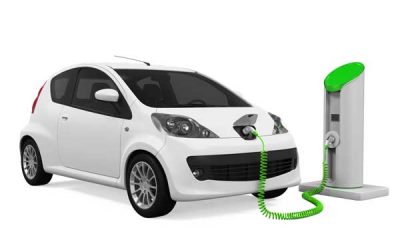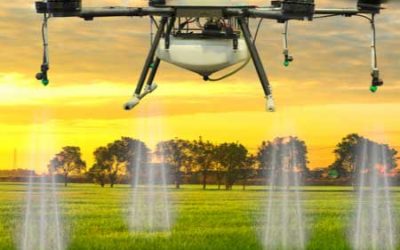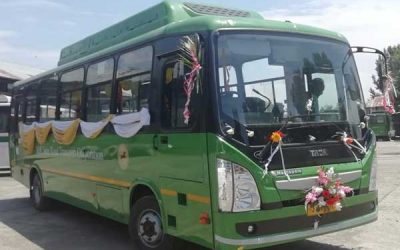The selection of Joe Biden as the United States’ next President is likely to be a new starting point for India’s information technology industry. Under Biden’s leadership, industry onlookers hope that restrictions around H1-B visa will be relaxed soon, enabling many Indian technology professionals to work in the US.
While the policy matters may not change immediately, Biden’s presidential campaign statements reflect his strong will toward a more focused approach in strengthening US-India bilateral economic relationship. Looking back at 2017, the outgoing Donald Trump’s government squeezed the US immigration policy, making it challenging for Indian tech companies to send their staff to their US offices for training and work.
According to NASSCOM, the industry association for the IT and IT-enabled products and services sector in India, since 2005, the bilateral trade between India-US increased by over 400%, with a total increase in value US $37 billion from 2005 to US $149 billion in 2019. NASSCOM states that the technology sectors of both countries have played a critical role in driving this bilateral trade.
Major enterprises in India and the US focusing on digital transformation and immersive technologies as part of their growth strategy. In view of this, the IT Services are sitting on a hotbed of opportunities to help businesses harness digital channels and modernize their IT infrastructure to innovate faster and reimagine the business landscape. (See: Salary hikes at IT firms on cards as COVID disruption eases)
In Joe Biden’s regime, the favorable trade ecosystem could also encourage American technology companies such as Microsoft, Amazon, Google, HP, IBM, Facebook, and Uber to make further investments in India and develop their outsourcing centers to leverage the Indian talent. (See: Tech Cos take M&A route for digital transformation supremacy)
India as an emerging IT power
India’s IT industry is currently experiencing tremendous growth due to the rapid demand for cloud-based remote-working and transformative solutions. There is an enormous rush to upgrade digital infrastructure, leveraging technologies such as big data, artificial intelligence, and automation. And numerous Indian IT companies such as TCS, Infosys, HCL, and Wipro are broadening their horizons across the US to accelerate their growth. (See: Growth of Indian IT sector set for revival in 2021 )
Over the last few years, the Indian technology industry has made a more profound presence in the US economy, driving local investments, job creation, community services, and upskilling their US employees. For instance, TCS has been ranked among the top two US recruiters of IT services talent. The company has hired over 21,500 employees in the last five years, taking its total US workforce strength to about 40,000 employees.
The Mumbai-based company has also mentored more than 25,000 students across the US and Canada, enabling them to learn new-age technology skills.
Similarly, India’s second-largest IT company, Infosys, is also betting big on its US expansion plans. During the last three years, Infosys has unveiled six technology and innovation centers in the US across Indiana, North Carolina, Connecticut, Rhode Island, Texas, and Arizona. The Bangalore based IT firm has plans to hire 12,000 American workers by 2022 to support the growing client base, who are modernizing their IT infrastructure in the wake of increasing remote-work trend.
Wipro, too, is not far behind when it comes to expanding to the US. The company is setting up new offices of its strategic design arm, Designit, outside of conventional presence in Silicon Valley and New York City. Through its design arm, the company works with leading enterprises such as BMW, Cisco, FedEx, and GM to design innovative business offerings and processes.
Another tech major, HCL is also beefing up its capabilities in the US to build information security and cyberthreat intelligence solutions.
Additionally, there are many American technology companies such as Microsoft, Amazon, Google, HP, IBM, Facebook, and Uber that continue to make substantial investments in India and develop their outsourcing centers to leverage the Indian talent
Opportunity to address the talent gap in the US
According to Nasscom, one of the significant challenges being confronted by the US economy is the lack of STEM (science, technology, engineering, and mathematics) professionals in the country. The US has millions of STEM sector jobs that remain vacant as it doesn’t have enough workforce to fill those positions.
NASSCOM says that it looks forward to working together with the new US Administration, finding solutions to the STEM skills gap, and enabling America to be more competitive, grow, and create more jobs.
The US government is increasingly facing demand and skills gaps in several IT sector branches, and under Biden’s leadership, the US is anticipated to call for concrete steps to bridge those gaps. And given India’s strong talent pool in this area, this will certainly offer more opportunities for the country.
Nevertheless, a lot will be dependent upon the transition process to the newly elected government, local sentiments of people, and the dollar to rupee currency stability in value.














0 Comments